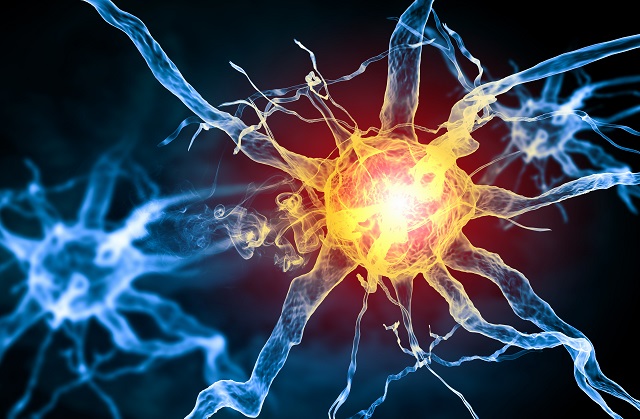
Image Credit: Shutterstock
A group of scientists led by Polina Anikeeva, AMAX Assistant Professor in Materials Science and Engineering, recently developed polymer-based neural probes and magnetic nanoparticles to treat neural disorders like paralysis and Parkinson’s by stimulating the nerve cells in the brain and spinal cord.
Chi (Alice) Lu, Materials science and engineering student, developed the polymer-based fiber probe that optically triggers nerve cells in vivo and records neural activity.
He stated that the fiber made of organic materials contains an optical waveguide that supplies light for nerve stimulation and electrodes for recording the corresponding neural signals. Further, Anikeeva stated that tissue analysis suggests enhanced viability of cells around the probe owing to the soft, flexible and biocompatible characteristics of probe.
 Polina Anikeeva, the AMAX Assistant Professor in Materials Science and Engineering, in the MIT lab where her group studies magnetic nanoparticles for non-invasive neural stimulation. (Photo: Denis Paiste/Materials Processing Center)
Polina Anikeeva, the AMAX Assistant Professor in Materials Science and Engineering, in the MIT lab where her group studies magnetic nanoparticles for non-invasive neural stimulation. (Photo: Denis Paiste/Materials Processing Center)
Another related study reports how heat dissipates in iron oxide nanoparticles based on the conditions of alternating magnetic fields applied on them.
According to Anikeeva, this principle paves way for the development of customized ferrite nanoparticle arrays by tweaking the material properties of nanoparticles corresponding to different parameters of alternating magnetic fields.
This novel technique is known as magnetothermal multiplexing and the research findings were reported in Applied Physics, May 26 paper. Techniques that are presently available to treat Parkinson’s disease involve invasive methods with adverse effects.
She also stated that the team is currently working on incorporating the nanomaterials within the neurons non-invasively, i.e. by injecting nanoparticles into the specific location of brain, followed by external application of magnetic field to stimulate neural activity in brain.
Anikeeva added that the limitations of bionic over human can be resolved by enhancing the specificity and biocompatibility of the nanoparticles corresponding to the target tissue.
However, the challenge lies in identifying the suitable material for neural interface and constructing devices with appropriate properties corresponding to the surrounding cellular environment.
She concluded that better understanding on the treatment of neurological disorders helps mitigate changes in membrane potential and alter the functions of neural membranes.